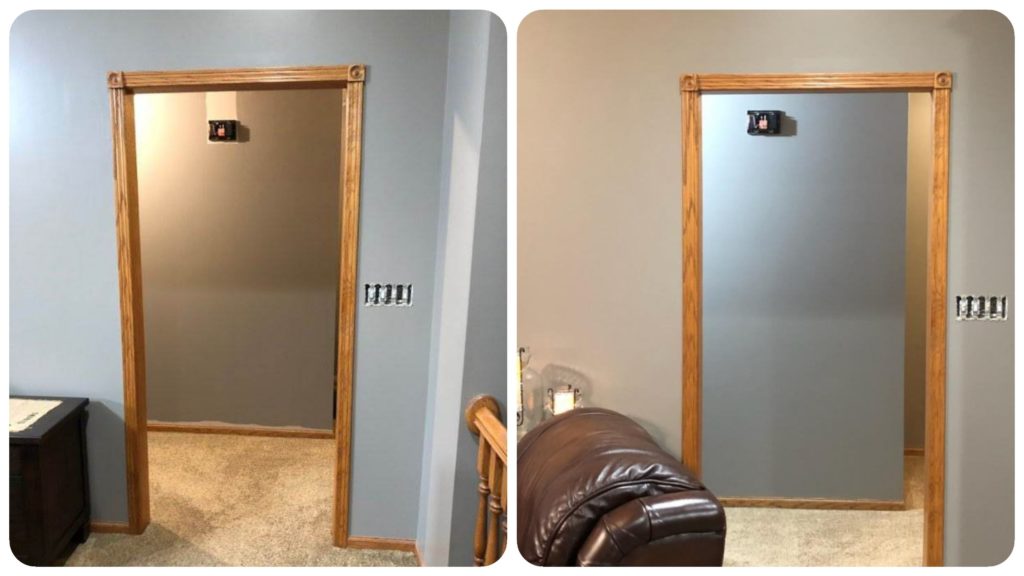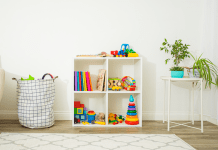Recently, my sister decided to give the interior of her home a new coat of paint, something to freshen the space up. She wanted a color that would coordinate nicely with the furniture she already had. The living room, foyer, hallway, and open staircase were all on the to-paint list. Open concept homes are lovely that way. One room inevitably flows into the next. A simple refresh of the living room turned into a larger project. The staircase, with its tall wall, set the task from an easy DIY to hiring it out.
Still, she picked her paint color with confidence, Dovetail by Sherwin Williams. The painters arrived, she left for work and stopped home on her lunch break. Her beautiful “true gray,” as the sales associate called it, looked blue.

Knowing that my husband and I are in the market for a new splash of color for our interior, I wanted to figure out what went wrong and how she corrected it. I want to avoid making the same mistake.
A Lesson on Lighting
Ever drive down the road at night and notice one streetlamp is glaring blue-white while all the others in the row are a soft, almost dim yellow? This blue-white or intense white is a cool light, similar to the sun at its highest peak in the day—bright and white. It tends to wash out color. All those soft lights are considered warm light, similar to the amber glow of a fireplace or a setting sun. Sometimes they appear yellow.
Why is this important?
Cooler lighting will enhance cooler colors: blues, grays, and greens. While warmer lighting enhances warmer colors: yellows, oranges, and reds. My sister had cool, artificial light throughout that space. It emphasized the blue in a way that the fluorescent lighting in the store did not.

In the above comparison, the paint color is the same in both the living room (front) and hallway (back). The only difference is the lighting. Lightbulb color temperature is measured in degrees Kelvin. The higher the color temperature, the cooler the light. Temperatures between 2700K-3500K are considered warm, whereas color temperatures of 5000K-6500K are cool. Check the packaging when purchasing lightbulbs. It should list the color temperature in Kelvin or state if it is a warm or cool light.
Additional Paint and Light Tidbits:
Her trim is brown. Colors pull from other colors. What looked like a “true gray” under the florescent light in the store next to white trim and other gray paint chips, looked one way. In her house, next to the brown trim and warm lighting, looked completely different.
Another thing to consider is natural light. North facing windows will add a touch of blue to your room, whereas west-facing windows will add a warmer glow from sunsets: yellow and red tints. If your space stretches from one side of the house to the other, the paint will reflect a different hue at different times of the day.
How to Pick the Right Paint Color, the Right Way:
- Select a variety of paint chips from the store. Take them home and place them in your room with its lighting. Colors change. Sensational Sand looked like a soft sandy brown in the store, but at my house, under my light, it looked pink. Don’t skip the step of seeing the color choices in the space it’ll be in.
- Buy a sample and paint a square of the wall. Yes, I know it’s scary, and it seems wasteful, but if you don’t, you may end up with blue walls instead of gray; or pink instead of tan.
- Look at the color at different times throughout the day, noticing how the natural light mixed with your artificial light affect the color. Also, take into consideration the other colors working in the room. Do you have a dark navy couch? A white-wash table? Chocolatey brown floors? The paint will pull in some of these colors, too.
- Pick the color that satisfies your needs the best and paint away! Hopefully, by taking the extra steps, you’ll end up with the color of your dreams.
The Fix
I wish there was a magic formula—for 2700K lighting, move two shades darker—but there isn’t. The best solution is to see the color in the space before painting. My sister had two options. Change the new paint color or change the lightbulbs. She opted for the practical and changed the bulbs.

















